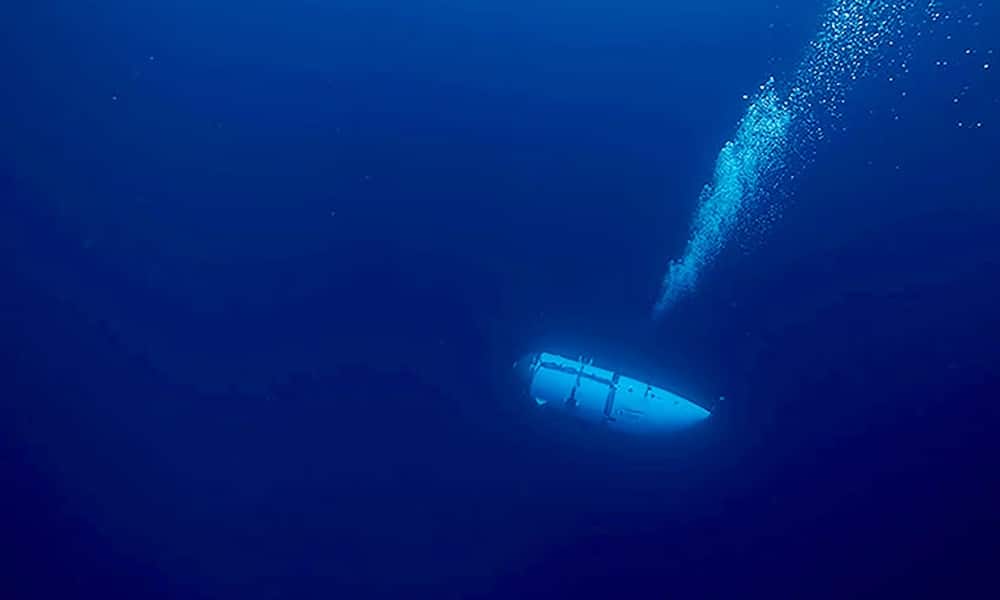Zane Phillips and Froy Gutierrez are our new favorite Hollywood couple, and they are hot, hot, hot!
Supreme Court Sides With Anti-Gay Website Designer
Estimated reading time: 4 minutes
Table of contents
The Landmark Decision
In a loss for LGBTQIA+ rights, the Supreme Court sided with an anti-gay wedding website designer and against the Anti-Discrimination Act in Colorado. In a 6-3 decision, divided along ideological lines, SCOTUS has now opened the door for further discrimination against the queer community.
This makes it easier for businesses like 303 Creative to refuse services to LGBTQ+ couples.
Introduction to the Controversial Case
The case, 303 Creative LLC v. Elenis, recently reached a decision by the Supreme Court of the United States. This contentious case revolved around the right of a wedding website creator to refuse service to same-sex couples based on First Amendment rights.
Masterpiece Cakeshop v. Colorado Civil Rights Commission case?
This case expands on the precedent set by the 2018 case, Masterpiece Cakeshop v. Colorado Civil Rights Commission. The Supreme Court had previously sided with a bakery that declined to make a wedding cake for a same-sex couple, using the Free Exercise Clause of the First Amendment as justification.
The Argument of 303 Creative LLC
Lorie Smith, the proprietor of 303 Creative LLC, wanted to prevent the Colorado Anti-Discrimination Act from being enforced against her. Smith stated that same-sex marriage went against her Christian faith, a belief she argued was protected under the First Amendment.
Understanding Public Accommodation Laws
Public accommodation laws like Colorado’s strive to ensure equal access to publicly available goods and services, regardless of sexual orientation. This case put such laws under the microscope, questioning how they should apply to businesses providing expressive services.
The Question of Compelled Speech
The Justices of the Supreme Court debated whether the creation of a wedding website constituted speech. This question was vital because if creating such a website were seen as speech, anti-discrimination laws could potentially compel someone to express something they disagree with, potentially violating their First Amendment rights.
Wider Implications of the Case
The decision in this case has ramifications far beyond wedding websites. It is set to influence other businesses providing expressive services by examining the balance between anti-discrimination laws and First Amendment rights.
FAQ: 303 Creative LLC v. Elenis
At its core, this case focused on whether a wedding website creator has the right to refuse service to same-sex couples, basing this refusal on First Amendment grounds.
Interestingly, the Masterpiece Cakeshop case involved a similar issue, where a bakery refused to make a wedding cake for a same-sex couple. In that case, the Supreme Court sided with the bakery, establishing a precedent that this current case aimed to follow and further clarify.
Lorie Smith is the individual at the center of this case. She owns 303 Creative LLC, a wedding website creation business. Smith’s primary argument was a desire to prevent the Colorado Anti-Discrimination Act from being enforced against her. In her view, creating wedding websites for same-sex marriages violated her Christian faith.
Public accommodation laws, such as the ones enforced in Colorado, serve a crucial purpose. They aim to ensure that everyone has equal access to publicly available goods and services, regardless of characteristics like sexual orientation. The enforcement and interpretation of these laws in relation to businesses providing expressive services became a key issue in this case.
Compelled speech is a nuanced concept in constitutional law. It suggests that the government cannot force an individual or group to support certain expressions or ideas. Consequently, this case delved into whether making a wedding website for same-sex couples could be considered a form of compelled speech.
The ramifications of the decision, in this case, are far-reaching. It could influence how other businesses providing expressive services navigate conflicts between religious beliefs and public accommodation laws, particularly when it comes to serving LGBTQ+ individuals or same-sex couples.
The Supreme Court sided with 303 Creative LLC, thereby making it easier for businesses to refuse services to LGBTQ+ couples.
More Stories
Byron Perkins opens Up About Why He Came Out – Shows Off New BF
Byron Perkins is tired of living his life to please others.
Human Remains Found Amidst Titan Submersible Debris, says US Coast Guard
Estimated reading time: 5 minutes
Table of contents
- Titan Sub’s Components Recovered
- Investigation Initiated into the Catastrophe
- Tragic Loss of Life on the Titan
- Uncertain Prospects of Recovering Bodies
- Major Pieces of the Titan Recovered
- Concerns About OceanGate’s Safety Practices
- FAQs about the Human Remains Found in the Titan Submersible
- More Titan Stories
The US Coast Guard has announced the discovery of “presumed human remains” within the debris of the ill-fated Titan submersible. The collected wreckage pieces from the Titan, which tragically imploded during a deep-sea expedition to the Titanic, arrived for unloading in St John’s, Canada, this Wednesday.
Titan Sub’s Components Recovered
Investigators identified the submersible’s landing frame and rear cover among the recovered fragments. As stated by the coast guard, US medical professionals now have the task of conducting a detailed analysis on these suspected remains.
Investigation Initiated into the Catastrophe
The authorities are at the inception of a comprehensive investigation to decode the causative factors of this disaster. The evidence will be transported to a US port by the Marine Board of Investigation (MBI) of the Coast Guard for further scrutiny and testing.
“There is still a substantial amount of work to be done to understand the factors that led to the catastrophic loss of the Titan and help ensure a similar tragedy does not occur again,” said MBI chair Capt. Jason Neubauer in a statement. He also expressed gratitude for the coordinated international support that enabled the recovery and preservation of this critical evidence despite the extreme offshore distances and depths.
Tragic Loss of Life on the Titan
All five people on board the vessel tragically lost their lives on June 18 after it imploded about 90 minutes into the expedition to explore the famous 1912 shipwreck, located at a depth of 3,800m (12,500ft) in the north Atlantic. The victims included the head of OceanGate, Stockton Rush; British explorer Hamish Harding, Shahzada Dawood and his son Suleman Dawood, and French diver Paul-Henry Nargeolet.
Uncertain Prospects of Recovering Bodies
Officials initially held skepticism about recovering any bodies due to the harsh environment at the seafloor. “This is an incredibly unforgiving environment down there,” stated Coast Guard Adm John Mauger following the confirmation of the vessel’s loss. Cpt Neubauer assured that investigators would exercise “all precautions” upon the discovery of human remains and that the investigation would likely encompass a formal hearing with witness testimony.

Major Pieces of the Titan Recovered
According to the coast guard, rescuers discovered five substantial parts of the Titan submersible in a large debris field near the Titanic’s bow.
Concerns About OceanGate’s Safety Practices
OceanGate, which managed the expedition, has come under scrutiny for its safety measures, and previous employees have expressed concerns about the Titan sub, which was not subject to regulation. BBC has revealed email exchanges where Mr. Rush dismissed safety worries from an expert, accusing them of hindering innovation. A former OceanGate employee also noted “numerous issues that posed serious safety concerns” in an inspection report, including the hull’s testing methods.
OceanGate stated in a previous week that it’s “an extremely sad time for our employees who are exhausted and grieving deeply over this loss”.
FAQs about the Human Remains Found in the Titan Submersible
The US Coast Guard found presumed human remains amidst the wreckage of the Titan submersible.
Authorities found the debris of the Titan submersible and suspected remains in the North Atlantic, near the wreck site of the Titanic. Later, they unloaded these materials in St John’s, Canada.
The US Coast Guard’s Marine Board of Investigation (MBI) is leading the investigation into the incident.
Five individuals, tragically perished in the disaster. The victims included OceanGate’s head Stockton Rush and British explorer Hamish Harding. As well as Shahzada Dawood with his son Suleman, and French diver Paul-Henry Nargeolet.
Yes, OceanGate faced criticism regarding its safety measures. Several former employees raised concerns about the Titan submersible, which was not subject to regulation. Some of these concerns included issues related to the testing of the hull.
As of now, the US Coast Guard has stated that they have found “presumed human remains.” US medical professionals are conducting a formal analysis of these remains to confirm their identities.
No, photos of the presumed human remains from the Titan submersible haven’t been released. The U.S Coast Guard respects the victims and their families. They don’t publicize such sensitive images. Photos of the debris field assist in the investigation. However, images of human remains are used privately for formal analyses.
More Titan Stories
Ross Lynch’s Shirtless Greece Photos Have Fans Sweating
Ross Lynch posts a hot video in a very revealing green swimsuit while relaxing on a beach in Greece.
Madonna Postpones Celebration Tour After Serious Hospitalization
Madonna was reportedly rushed to a New York City intensive care unit due to a “serious bacterial infection.”
What Will Happen to the Bodies of the Titan Crew: ‘Presumed Human Remains’ Found
Estimated reading time: 8 minutes
Updated on June 28, 2023 at 3:39 p.m. PST
Originally published on June 22 4:55 p.m. PST
Table of contents
- Presumed Bodies of the Titan Crew Found
- The Tragedy of the Titan Submersible
- Ocean’s Extreme Environment: A Grave Like No Other
- The Titan Implosion: Immediate Aftermath
- Deep-sea Decomposition: A Slow Process
- Role of Scavengers: Nature’s Undertakers
- The Final Stage: Bones and Sediment
- Remembering the Titan Crew
- FAQ: What Happens to the Bodies of the Titan Crew?
- More Titan Stories
Presumed Bodies of the Titan Crew Found
The military branch, US Coast Guard, announced on Wednesday that they have retrieved what are believed to be human remains from the ocean floor, located within the debris field of the Titan submersible. A comprehensive analysis will be conducted on these recovered materials.

The Tragedy of the Titan Submersible
In light of the recent tragedy that unfolded in the depths of the North Atlantic, where the submersible Titan imploded during a mission to the Titanic wreckage site, questions have arisen about the fate of the bodies of the five men who were tragically lost.
Ocean’s Extreme Environment: A Grave Like No Other
The bodies of the Titan crew, submerged at the chilling depth of 12,500 feet underwater, are subjected to an incredibly unforgiving environment. Recognizing the unique conditions of this final resting place – extreme cold, intense pressure, and complete darkness – provides context to their fate.
The Titan Implosion: Immediate Aftermath
In the case of the Titan disaster, after the implosion of the submersible, the bodies of the crew were likely subjected to instantaneous trauma due to the sudden and dramatic pressure change. The subsequent steps in their journey involve settling into the deep-sea environment.
Deep-sea Decomposition: A Slow Process
Over time, the bodies will decompose in a process distinctly different from terrestrial decomposition. Factors like the low temperatures, high pressure, and absence of sunlight play pivotal roles in this deep-sea decomposition process.
Role of Scavengers: Nature’s Undertakers
Ocean scavengers are likely to contribute significantly to this process. The action of creatures like hagfish, amphipods, and rat-tail fish, combined with the slow decomposition, will eventually leave behind skeletal remains.
The Final Stage: Bones and Sediment
In the final stages, the bones will likely get buried in the seafloor sediment, marking the end of a solemn process that underscores the immense power of the ocean and the fragility of human life in such extreme conditions.
Remembering the Titan Crew
The fate of their bodies is a stark reminder of the finality of this loss. However, it is essential to remember the indomitable spirit of exploration these men embodied and the valuable contributions they made to deep-sea exploration.
FAQ: What Happens to the Bodies of the Titan Crew?
Yes, the U.S. Coast Guard has reported that they have recovered what are being referred to as “presumed human remains” from the seafloor in the area where the debris of the Titan submersible was found.
The U.S. Coast Guard has announced that a formal analysis will be conducted on the presumed human remains that were discovered in the area of the Titan submersible’s debris field.
The U.S. Coast Guard will be responsible for conducting the formal analysis of the presumed human remains that were recovered from the Titan submersible’s debris field.
The Titan submersible, a 22-foot vessel with five passengers, experienced a catastrophic implosion during a deep-sea exploration mission to the Titanic wreckage site, at a depth of approximately 12,500 feet.
The timeline for the results of the formal analysis of the presumed human remains found in the Titan submersible’s debris field has not been disclosed by the U.S. Coast Guard at this time.
The discovery of presumed human remains in the Titan’s debris field is a significant development in the investigation into the tragic accident. This could potentially provide more information on what exactly occurred during the implosion of the Titan submersible.
An underwater implosion typically occurs when the hull of a submarine or submersible cannot withstand the immense pressure exerted by the surrounding water. This usually results from a weakness or failure in the hull structure or its pressure-resisting components.
The sudden change in pressure during an implosion would cause immediate trauma to the human body, essentially disintegrating it. The specifics, however, depend on various factors including the depth at which the implosion occurs and the design of the submersible.
Decomposition at the ocean’s bottom is a slow process due to extreme cold, intense pressure, and complete absence of sunlight. The bodies would first be acted upon by scavengers. Over time, the slow decomposition process combined with the action of the scavengers would eventually leave behind skeletal remains.
The skeletal remains would likely become part of the seafloor over time, being buried under sediment, thereby becoming a part of the ocean’s ecosystem.
Recovery of bodies from such extreme depths is incredibly challenging due to the unforgiving deep-sea environment. It requires specialized equipment and poses significant risks, hence it is rarely attempted. Following a submarine implosion, the extreme and rapid increase in pressure is immense. This instantaneous transition from a controlled environment to one of severe pressure is highly destructive. It’s unlikely that anything, including human bodies, would stay intact in such an event. It’s important to note that this is a worst-case scenario, and every effort is made in the design, construction, and operation of submarines to prevent such occurrences.
Preventing such incidents involves rigorous safety measures, including meticulous pre-dive checks, continuous monitoring of structural integrity, and adhering to operational limits, especially depth limits. Training for emergency scenarios and maintaining effective communication lines are also crucial.
In both cases, the extreme pressure, low temperature, and limited light of the deep ocean would lead to similar processes of decomposition. The specific conditions would depend on factors like the exact depth and local marine life.
Given the amount of time that has passed and the deep-sea conditions, it is highly unlikely that any recognizable human remains of the Titanic disaster can be found today.
Bodies that were not recovered would have likely undergone decomposition under the extreme conditions of the deep sea, similar to those experienced by the crew of the Titan submarine.
The exact fate of all the bodies from the Titanic disaster is unknown. In the days following the tragedy in 1912, some bodies were recovered by passing ships, but many were not. Due to the extreme depth and cold temperatures where the Titanic sank, any bodies not recovered soon after the sinking would have been subject to the forces of decomposition and scavenging marine life. Today, researchers believe that there are likely no recognizable human remains at the Titanic wreck site. Instead, remnants of clothing, shoes, and other personal belongings, which were more resistant to decomposition, may still exist. The Titanic’s debris field is expansive, spanning an estimated 15 square miles, meaning not all wreckage or associated remains have been found or thoroughly explored. As of September 2021, no identifiable human remains have been confirmed at the Titanic wreck site.
The potential for recovering the bodies of the Titan submarine crew from the ocean’s depths is complex and dependent on a multitude of factors. The wreckage is situated about 13,000 feet below sea level, where extraordinary pressure and cold temperatures can pose significant challenges for recovery missions. Typically, specialized tools such as remote-operated vehicles (ROVs) are used to explore the debris and its surrounding area in such scenarios. However, physically retrieving bodies from such profound depths is a considerable challenge. The length of time that bodies have been submerged could impact their state of preservation, thereby influencing the likelihood of successful recovery. While these challenges remain, the US Coast Guard announced on Wednesday that they have recovered “presumed human remains” from the seafloor in the vicinity of the Titan submersible’s debris field. A formal analysis is currently being conducted by the military branch to confirm these findings. Thus, while the situation is ongoing and complex, efforts are being made to recover and identify the remains of the Titan’s crew.
More Titan Stories
8 Queer Books Celebrating Drag
Despite what recent fearmongers want you to think, drag is not new. For centuries, people — both straight and from across the queer spectrum — have crossed fashion’s gender binaries for pleasure and performance. Just ask Shakespeare! His all male casts donned wigs, makeup, and dresses to tell some of the greatest love stories known to history.
Drag is and always has been an art form, a means of self-expression, and a thriving form of entertainment for all ages; it is a gift to the world and the queer community. The books below highlight the beauty and struggle of the drag world and how we can better celebrate and empower it.
GuRu
by RuPaul

Icon. Global sensation. Mother. These are just a few words to describe the revolutionary power of RuPaul, whose show RuPaul’s Drag Race has delighted and inspired countless people worldwide. GuRu is written with RuPaul’s signature mix of charisma, uniqueness, nerve, and talent that has made her the most beloved drag queen in a generation.
Life as a Unicorn: A Journey from Shame to Pride and Everything in Between
by Amrou Al-Kadhi

Home Alone changes lives. That fact was inarguably true for Amrou Al-Kadhi, who, much to their parent’s dismay, fell in love with Macaulay Culkin at first sight — not that we blame them. That moment became the first step in a long journey from God-fearing Muslim boy to queer drag queen in towering heels. Both hilarious and challenging, Al-Kadhi’s memoir reminds us that even our most scattered pieces, when assembled with love, can become something beautiful.
The Hips on the Drag Queen Go Swish, Swish, Swish
by Lil Miss Hot Mess
Illustrated by Olga de Dios Ruiz

Fun colors, fancy names, and beautiful illustrations. What more could you want from a children’s book? Written to the tune of “Wheels on the Bus,” The Hips on the Drag Queen Go Swish, Swish, Swish follows a group of drag queens as they spread joy and color through the town — a perfect read for bedtime or at your local drag queen story hour.
The Big Reveal
by Sasha Velour

Memoir meets history meets art in this vibrant work from legendary drag queen Sasha Velour. This unique manifesto combines original illustrations and photographs with Velour’s stories of her youth and career, as well as the rich queer history that made it all possible. Velour reveals (pun intended) that drag is more than a performance — it’s an act of queer liberation.
Trixie & Katya’s Guide to Professional Womanhood
by Trixie Mattel and Katya Zamolodchikova

Sashay your way to the greatest business advice you never knew you needed. Covering everything from interview outfits to retirement to whether you’re the “office slut” (good for you), Trixie and Katya’s savvy and satirical guide will leave you laughing and smarter. After all, if these queens can take on the world in six-inch heels and even taller wigs, why can’t you?
Queer Maximalism X Machine Dazzle
by Elissa Auther, Mx. Justin Vivian Bond, David Román, Taylor Mac, Madison Moore

A good drag look is so much more than bold lipstick and the right amount of silicone. Few know this better than theatrical genius and designer Machine Dazzle, the artist behind some of the biggest names in cabaret, drag, and performance art. Collected here for the first time, readers can enjoy his extravagant stage sets and creations alongside essays and career photos. It is the perfect chef’s kiss to his motto: more is better.
The Black Flamingo
by Dean Atta

Told in poetic verse, The Black Flamingo is a stunning young adult debut about finding your voice in a world that wants to keep you silent. Michael, a mixed-race gay teen growing up in London, longs to be enough of something. When he discovers the drag society at his university, he also finds a new side of himself — and the Black Flamingo is born.
The Art of Drag
by Jake Hall, Sofie Birkin, Helen Li, and Jasjyot Singh Hans

Much like a perfect lipsync, this book is a gag. Bright colors, mesmerizing artwork, and surprising history come together to tell the rich story of drag. Journalist Jake Hall tells it all, from mimes and Kabuki theatre to RuPaul and Dragula, with the help of incredible illustrations and a passion for all things queer. Much like the shade rattle during a blistering critique, this one will go fast — The Art of Drag is almost out of print!
Please note: The Art of Drag comes with an unattached spine. The pages lie flat so you can better enjoy the artwork!
No matter the anti-LGBTQ+ rhetoric that continues to spew, drag is not — and should never be — a crime. So, unlike those drab fearmongers, pick up a book, stay educated, and please tip your local drag queens. And remember, in the timeless words of the inimitable RuPaul, “We’re all born naked, and the rest is drag.”
More Stories: 8 Books for Baby QueersLauv Comes Out on TikTok: “A Lil Bit Into Men”Hayley Kiyoko Speaks Out After Police Warning, Drag Queens Take the Stage in Tennessee
Titan Debris Recovered: Titanic Submarine Arrives in Newfoundland
Estimated reading time: 5 minutes
Table of contents
- Titan’s Catastrophic Journey: The Story Thus Far
- Pieces of Titan Recovered: Unearthing the Ocean’s Secrets
- Titan Wreckage Recovery: A Glimpse into the Investigation
- Horizon Arctic and Coast Guard Representatives
- Moving Forward: Addressing the Major Marine Casualty
- Post-mortem of the Voyage: OceanGate Expeditions Under Scrutiny
- Frequently Asked Questions about the Recovery and Investigation
- More Titan Stories
St. John’s, Newfoundland port witnessed the arrival of significant fragments from the ill-fated Titan submersible on Wednesday, marking a pivotal moment in the ongoing investigation into its tragic implosion during the Titanic wreck expedition.

Titan’s Catastrophic Journey: The Story Thus Far
The journey to the Titanic’s wreck turned to disaster last week when the Titan submersible imploded, claiming the lives of all five passengers aboard. The retrieval of twisted remnants from the 22-foot underwater vehicle, now scattered across the ocean floor, was brought to a Canadian Coast Guard pier in St. John’s, furthering the investigation into the catastrophe.
Pieces of Titan Recovered: Unearthing the Ocean’s Secrets
The Horizon Arctic, a Canadian vessel, played a central role in the debris recovery operation, deploying a remotely operated vehicle (ROV) to scour the ocean floor near the Titanic’s wreckage. The ROV, owned by Massachusetts and New York-based Pelagic Research Services, completed the offshore operations on Wednesday. The team refrained from commenting on the ongoing investigation, focusing instead on the mission at hand.
Titan Wreckage Recovery: A Glimpse into the Investigation
The debris from the Titan, located approximately 12,500 feet underwater and around 1,600 feet from the Titanic wreck, serves as a vital clue into the disastrous event. The Coast Guard, which leads the investigation, had announced the submersible’s implosion and the loss of all lives on board on June 22.
The incident has now been escalated to a Marine Board of Investigation, the highest level of inquiry within the Coast Guard. Potential electronic data from the submersible’s instruments, as suggested by Woods Hole Oceanographic Institution’s Carl Hartsfield, could prove to be vital in understanding the Titan’s tragic descent.
The military branch, the US Coast Guard, reported on Wednesday that they have retrieved what they believe to be human remains from the ocean floor in the vicinity of the Titan submersible’s debris field. A comprehensive analysis is set to be conducted to confirm these findings.
Horizon Arctic and Coast Guard Representatives
Despite requests for comments on the Titan wreckage recovery, representatives for Horizon Arctic, Coast Guard, National Transportation Safety Board, and the Transportation Safety Board of Canada have chosen to remain silent, refraining from commenting on the returned debris or the investigation.
Moving Forward: Addressing the Major Marine Casualty
The loss of the Titan, now classified as a “major marine casualty,” will see the Coast Guard leading the investigation, as clarified by the National Transportation Safety Board. Further information will not be disclosed until the investigation concludes, as stated by Liam MacDonald, a spokesperson for the Transportation Safety Board of Canada.
Post-mortem of the Voyage: OceanGate Expeditions Under Scrutiny
The U.S.-based OceanGate Expeditions, the company behind the Titan, has come under scrutiny following the catastrophic event. Concerns are rising over the safety standards of private underwater exploration, spurred by the Titan’s hefty $250,000 ticket price. The Coast Guard has expressed an intention to use the findings from this investigation to enhance safety regulations surrounding submersible operations, aiming to prevent such disasters in the future.
Frequently Asked Questions about the Recovery and Investigation
The Titan submersible imploded during a voyage to the wreck of the Titanic, killing all five people on board. The cause of the implosion is under investigation.
The debris from the Titan was recovered near the Titanic wreck site, about 12,500 feet underwater. It was returned to the Canadian Coast Guard pier in St. John’s, Newfoundland.
The U.S. Coast Guard is leading the investigation into the Titan’s implosion, which they have declared a “major marine casualty.” The National Transportation Safety Board and the Transportation Safety Board of Canada are also involved in the investigation.
The passengers on the Titan were Ocean Gate CEO and pilot Stockton Rush, members of a prominent Pakistani family Shahzada Dawood and his son Suleman Dawood, British adventurer Hamish Harding, and Titanic expert Paul-Henri Nargeolet.
The Titan was embarking on a voyage to the wreck of the Titanic. Passengers were charged $250,000 each to participate in the voyage.
The Titan was owned and operated by OceanGate Expeditions, a U.S.-based company.
The pieces of Titan recovered will be analyzed to determine the cause of the implosion. It is hoped that data recorded by the submersible’s instruments will provide important clues about what went wrong during its descent.
As of the current report, there has been no official confirmation regarding the recovery of the bodies of the crew members from the Titan submersible. The investigation and recovery mission has primarily focused on locating and recovering the wreckage of the vessel.
More Titan Stories
Exclusive Clip: Alicia Roth Weigel Comes Out as Intersex in Front of the Texas Senate
Alicia Roth Weigel is a writer, speaker, and change agent, working to improve the landscape for marginalized populations in the South and worldwide.
In this clip, Roth Weigel comes out as intersex to the Texas Senate to fight against the passing of discriminatory legislation.
“At this point, I had not told my brother, my best friends, and people who have known me my whole life that I’m intersex. On the way to the Capitol is when I called my mom. And I was like, ‘I’m going to come out today.'”
In Focus Features’ new documentary Every Body, Roth Weigel, Sean Saifa Wall and River Gallo tell their stories of growing up intersex and the shame, secrecy, and non-consensual surgeries they endured all their life.
Watch this exclusive clip now and see Every Body only in theaters June 30.
About Every Body
“Every Body is a revelatory exploration of the lives of intersex people. The film tells the stories of three individuals who have moved from childhoods marked by shame, secrecy, and non-consensual surgeries to thriving adulthoods after each decided to set aside medical advice to keep their bodies a secret and instead came out as their authentic selves. Actor and screenwriter River Gallo (they/them), political consultant Alicia Roth Weigel (she/they), and Ph.D. student Sean Saifa Wall (he/him) are now leaders in a fast-growing global movement advocating for greater understanding of the intersex community and an end to unnecessary surgeries. Woven into the story is a stranger-than-fiction case of medical abuse, featuring exclusive footage from the NBC News archives, which helps explain the modern-day treatment of intersex people.”
The film is directed by Julie Cohen (RBG) and produced by Tommy Nguyen and Molly O’Brien.
Additional Resources on the Intersex Community
- InterACT
- interConnect (formerly AIS-DSD SG)
- The Intersex Justice Project
- The Interface Project
- Intersex Campaign for Equality
- The Houston Intersex Society
- The American Association for Klinefelter Syndrome Information and Support
- Beautiful You MRKH Foundation
- Canadian Centre for Gender and Sexual Diversity
- Club Intersex
- Egale Canada
- FedUp Fighting Eating Disorders
- Gender Spectrum
- Genetic.org (47XXY/Klinefelters)
- Los Angeles LGBT Center
- MRKH.org
- Turner Syndrome Society of the US
More Stories:
What Happens When a Submarine Implodes: The Titan Tragedy
Eleven Celebrities That Came Out as LGBTQIA+ in 2023
See What Queer Film Dylan O’Brien Will Star in Next











